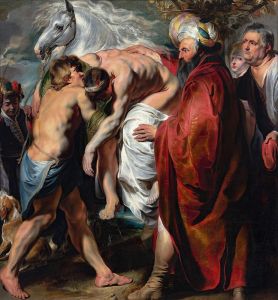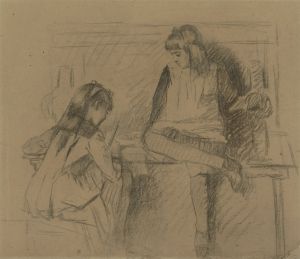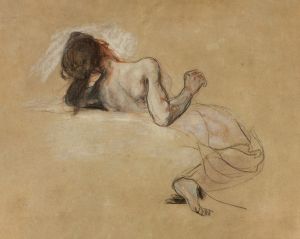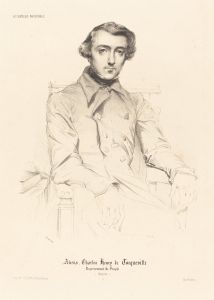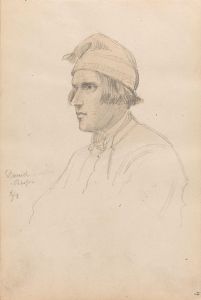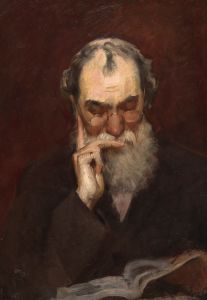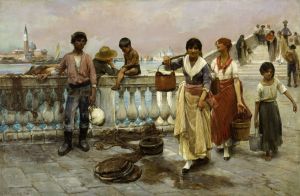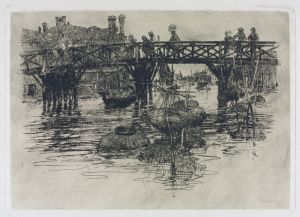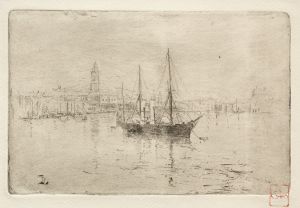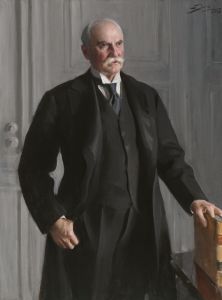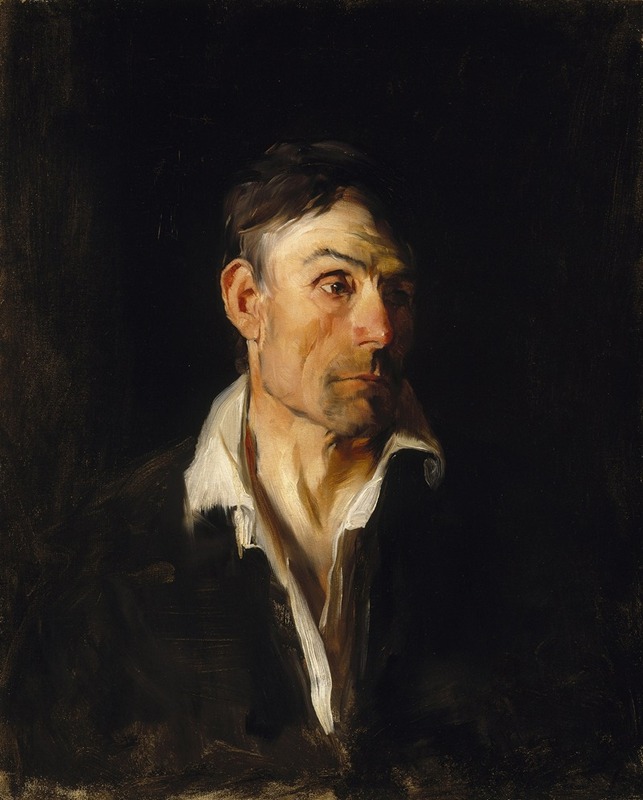
Portrait of a Man
A hand-painted replica of Frank Duveneck’s masterpiece Portrait of a Man, meticulously crafted by professional artists to capture the true essence of the original. Each piece is created with museum-quality canvas and rare mineral pigments, carefully painted by experienced artists with delicate brushstrokes and rich, layered colors to perfectly recreate the texture of the original artwork. Unlike machine-printed reproductions, this hand-painted version brings the painting to life, infused with the artist’s emotions and skill in every stroke. Whether for personal collection or home decoration, it instantly elevates the artistic atmosphere of any space.
Frank Duveneck's "Portrait of a Man" is a notable work by the American painter, who was a prominent figure in the late 19th and early 20th-century art scene. Duveneck, born in 1848 in Covington, Kentucky, was known for his strong brushwork and realistic portrayals, which were influenced by his studies and experiences in Europe.
"Portrait of a Man" exemplifies Duveneck's skill in capturing the essence of his subjects with a sense of immediacy and vitality. The painting is characterized by its bold use of color and confident brushstrokes, which were hallmarks of Duveneck's style. His approach often involved a direct and unembellished representation of his subjects, focusing on their character and presence rather than idealized beauty.
Duveneck's training in Munich under the guidance of Wilhelm von Diez and his exposure to the works of the Old Masters significantly shaped his artistic development. His time in Europe allowed him to refine his technique and adopt a more robust and dynamic style, which is evident in "Portrait of a Man." The painting reflects the influence of the Munich School, known for its emphasis on realism and dark tonalities.
The subject of "Portrait of a Man" remains unidentified, which is not uncommon in portraiture from this period. Duveneck often painted friends, fellow artists, and patrons, capturing their likenesses with a sense of intimacy and immediacy. The anonymity of the subject does not detract from the painting's impact; rather, it invites viewers to focus on the universal qualities of the human experience depicted through Duveneck's artistry.
Duveneck's work, including "Portrait of a Man," played a significant role in the American art scene upon his return to the United States. He became a pivotal figure in the Cincinnati art community, where he taught and influenced a generation of artists. His contributions to art education and his role in fostering a vibrant artistic environment in the Midwest were significant aspects of his legacy.
"Portrait of a Man" is part of Duveneck's broader oeuvre, which includes portraits, genre scenes, and landscapes. His work is held in high regard for its technical proficiency and emotional depth. Duveneck's paintings are housed in various collections, including major museums and galleries, where they continue to be appreciated for their contribution to American art history.
In summary, Frank Duveneck's "Portrait of a Man" is a testament to his skill as a portraitist and his ability to convey the essence of his subjects with clarity and vigor. The painting reflects the influences of his European training and his commitment to realism, making it a significant piece within his body of work and a valuable part of the American artistic heritage.





